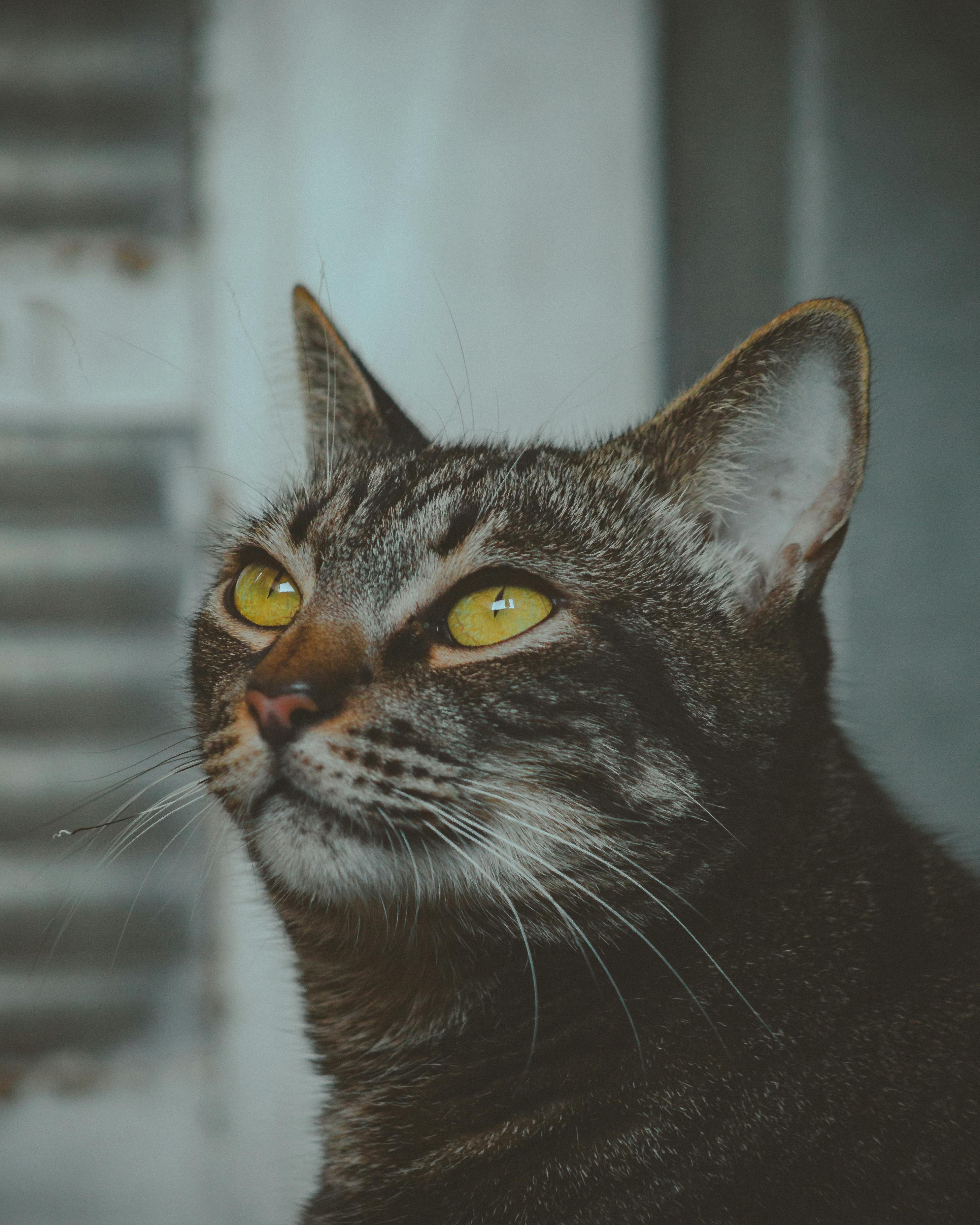

Very often the tabby cat is considered the most outgoing cat of all, playing and exploring like no other. When it comes to the tabby cat's personality, many owners seem to think there is something special about a tabby. As soon as the silk arrived in Britain, the similarity in pattern to the coat of the so-called 'tiger cat was noticed and this particular cat soon started being called 'tabi cat' which eventually became 'tabby cat'. It is believed the name tabby comes from a type of striped silk called Atabi, which was made in Attabiah in the Middle East. The patterns work as a camouflage when they're hiding in tall grass waiting for their unsuspecting prey. On the wilder side of the feline spectrum, the same genes give tigers and leopards their tabby pattern which helps them be such successful hunters. If you've ever looked closely at any cat in the sun, you probably noticed the subtle tabby markings starting to show up. This means that all cats are secretly tabbies - it's just more noticeable on those with patterned fur. The tabby pattern itself is the work of three types of genes that can be found in all domestic cats. To mark their special place in the feline world, all tabby cats from then on were rewarded with an 'M' on their forehead.īut the true explanation for the letter 'M' mark tells us that it all comes down to genetics. Whereas in one Islamic legend a tabby cat named Muezza saved his master Mohammed from a poisonous snake. In gratitude, his mother Mary stroked the cat's head and left an 'M' mark on its forehead. In Christian folklore, a tabby cat dutifully showed up to comfort baby Jesus. One story has it that the 'M' is related to the word 'mau' which in Ancient Egypt meant 'cat'.

It's not the coat but the hairs themselves that are striped. Although their coat stripes are very thin and barely visible on legs, face or tail, these are tabby cats through and through. And in contrast to all the tabby cats, a ticked tabby cat exhibits hardly any stripes or spots. The spotty tabby shows off their distinct round spots against a background of lighter fur and might even display a faint necklace line. The next two tabby cat types have decided to do without the stripes (or the food comparisons). Similar to the mackerel type, this pattern hasn't escaped food comparisons either as many people liken it to a marble cake. They have wider stripes that tend to curve to form circular patterns and three large stripes running from the shoulders to the base of the tail. The classic tabby is the most common of all the tabby cats. It is believed that this pattern was the original one for tabby cats. There is the mackerel tabby cat with long narrow parallel stripes running up and down the sides that are said to resemble a fish skeleton, which is where the pattern's name comes from. They sport different colours and sizes, exist across many breeds and wear different coat patterns.īut there are groups of tabby cats - the secret is the coat pattern. In fact tabby cats will not let themselves be easily crammed into definitions. Many people think that tabby cats are a particular breed, but actually Tabby refers to the coat pattern, which can be present on lots of different breeds. In fact, once you get to know them, there is nothing dull about these kitties. But as familiar as they are to us, there are plenty of tabby cat facts far from the ordinary. Tabby cats are adored all over the world, but do you know where their name comes from or what are the marks of a true tabby cat? Find out all this and more here.įrom stripes to whorls and spots, the tabby cats strut their patterned fur all over the globe.

You've heard of them and no doubt you've seen them time and again.


 0 kommentar(er)
0 kommentar(er)
